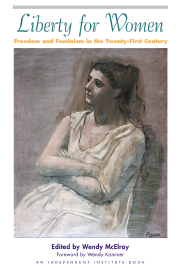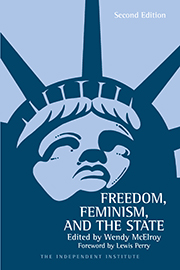Wal-Mart is facing the largest class action lawsuit ever brought against a private company. As many as 1.6 million women may join the suit and the possible payout could exceed $1 billion dollars. What are class action lawsuits, and why have they become so prominent in the news?
Class action lawsuits are an aspect of tort law, which addresses harm or loss that is caused either deliberately or through carelessness by the actions of another. A class action suit is brought by one or more plaintiffs on behalf of a larger group that has a common interest, a common harm. For example, if a product is defective and injures a consumer, that consumer can bring suit against the producer on behalf of all consumers similarly injured. After attorneys’ fees, any settlement or court award is divided among those participating in the suit.
In the Wal-Mart case, six women filed the original action in June 2001, claiming that the giant retailer discriminated against women in salaries and promotions. Approximately 1.6 million women who have worked for Wal-Mart since 1998 are eligible to join the suit.
There are several reasons why class action lawsuits have proliferated over the last few decades. Changes in legal procedure have favored the growth.
A comprehensive study from the Rand Institute for Justice entitled “Class Action Dilemmas, Pursuing Public Goals for Private Gains” explains one such change. “[T]he current controversy over class action roared to life in 1966 when Rule 23, the procedural rule that provides for class actions in federal courts, was significantly revised. . . . Whereas previously, all individuals seeking money damages with a class action lawsuit needed to sign on affirmatively (‘opt in’), now those whom the plaintiffs claimed to represent would be deemed part of the lawsuit unless they explicitly withdrew (‘opted out’).”
In an instant, the scope of lawsuits and the financial liability of defendants “multiplied many times over.” (Rule 23 has been subsequently amended, largely to increase the role of judges in every aspect of class action suits.)
In short, class action suits became tremendously more profitable, especially for lawyers whose contingency fees sometimes exceeded the money paid out to successful plaintiffs. Contingency fees are commonly viewed as a necessary device by which poor plaintiffs can access the court system. In 1971, the Florida Supreme Court stated, “It is irrefutable that the poor and the least fortunate in our society enjoy access to our courts, in part, because of the existence of the contingency fee.”
But the excesses of contingency fees have become infamous, leading critics to label class action suits as “jackpot justice” for lawyers. One critic is Supreme Court Justice Sandra Day O’Connor who has spoken out against “out-of-control class action lawsuits and outrageous contingency fees, which have turned some lawyers into ‘overnight millionaires.’”
A recent class action suit against a Hooters restaurant in Augusta, Ga., is just one example among many. Over 1,300 plaintiffs sued Hooters for sending out six unsolicited fax advertisements. Although the faxes had been actually sent by a third party with whom Hooters had contracted, the court awarded the plaintiffs $12 million. Each plaintiff was to receive $6,000, with lawyers claiming $4 million.
The Hooters in question subsequently filed for bankruptcy protection, thus validating a common objection to class action suits: they bankrupt businesses, sometimes frivolously.
But much more than monetary profit is involved in the growth of class action suits. The lawsuits have become a vehicle for social reform. Those who advocate class action suits often present them as part of a larger crusade for grassroots justice in the face of corrupt corporations and the wealthy (e.g. physicians). The movie “Erin Brockovich” exemplifies this representation.
The recent decision that a class action suit can proceed against Wal-Mart seems to be cut from this cloth. In his 84-page ruling, Judge Martin Jenkins of the notoriously liberal U.S. District Court in San Francisco called the case “historic in nature, dwarfing other employment discrimination cases that came before.” He compared the case to Brown v. Board of Education, the 1954 case that ended racial discrimination in schools.
Martin wrote, “This anniversary [of Brown] serves as a reminder of the importance of the courts in addressing the denial of equal treatment under the law whenever and by whomever it occurs.” Those words are more appropriate to a social reformer rather than to a judge who has neutrally weighed the merits of a case.
The court as social reformer is often given support by media eager to maximize publicity. For example, an editorial in the Chicago Sun-Times was titled “Class action could finally put women on fast track.”
The merits of the Wal-Mart case are blurred by association with a broader political cause. The case is as much or more a piece of social reform than it is restitution for injured individuals. This is one of the main criticisms aimed at class action lawsuits and reform-minded judges. Namely, that unelected courts—including lawyers and juries—are going far beyond their jurisdiction of providing remedies to specific individuals. They are usurping the function of lawmakers.
Phyllis Schafly’s latest book, “The Supremacists: The Tyranny of Judges—and How to Stop It” addresses this issue. A blurb on the book cover reads, “The gravest threat to American democracy is the supreme power of judges over political, social, and economic policy.”
No one knows how to definitively resolve the abuses and dangers of class action suits without denying the underdog access to the courts. A good first step, however, would be to require participants to “opt in,” to limit contingency fees for lawyers, and reduce the jurisdiction of judges.









